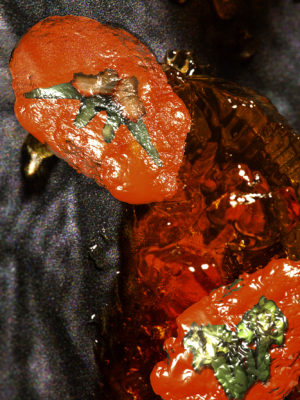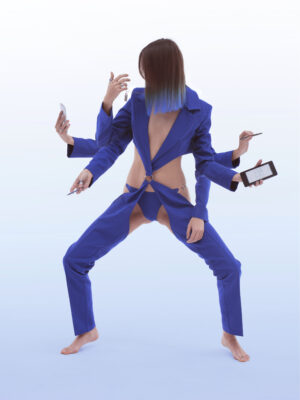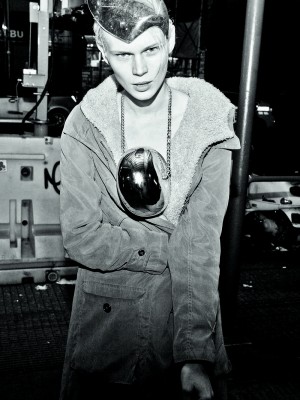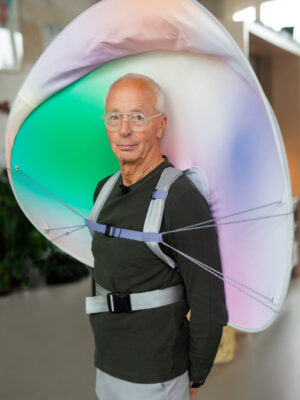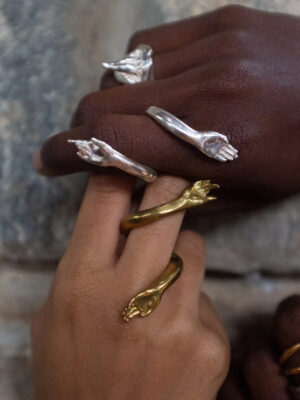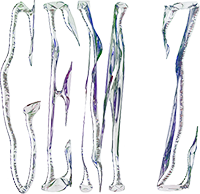Rebecca Schena
How did the idea for Finding Dodo arise? Did you decide on the concept of the exhibition after deciding to exhibit together, or were you brought together through your common interest in mythical and extinct creatures?
Jelizaveta Suska
I met Marion in Stockholm when she visited me during my residency there, and after we talked during Munich Jewellery Week, she wrote me with the idea of making a curiosity-cabinet-inspired exhibition. We each invited another artist. For me, it made a lot of sense to invite Märta, since her work is very much about curiosity, and Marion invited Lore. Our idea was that the curiosities should be humorous and modern, because not every old cabinet of curiosities is interesting: people get used to seeing old curiosities.
What are people going to experience when they first visit Finding Dodo? I’m wondering especially about the location; I see that it is going to be in a really beautiful flower shop.
Yes, when we exhibited the first time in Munich, we looked for an antique shop. But for New York we were not so sure, because New York antique shops look a little bit different. Bella (of NYCJW) suggested fleursBella, and we were super excited by it. The idea of the owner – her name is also Bella – was to make a sort of curiosity cabinet out of the flowers. It is like a wonderland.
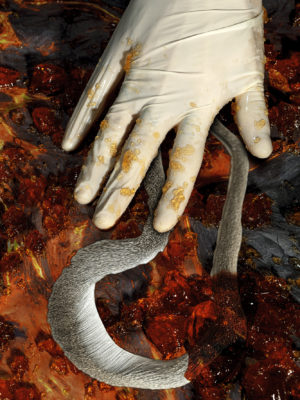
How will this installation be different from the first one?
The works will be more recent, and the atmosphere will be different, but most of us are not radically changing
our projects.
Marion goes to remote places in Korea and Japan and researches antique techniques like lacquer work. One of her lacquer pieces is a shell hair ornament which is based on a regional object that was used for showing a man’s status, but she has changed it. She also took some unique stones from Idar-Oberstein with her to her residency in Japan, where she’s doing something really crazy and very time consuming with them.
Lore is working with animal hide and I think the question that she is trying to answer for herself is whether it is possible to make art with a commercial approach. Even though they might look the same – the shapes are all very minimalist and clean – each hide is very individual, just like the animals they come from.
Marta had a fear of insects, and she’s trying to fight it with this feeling of attraction-repulsion: when you see something that you want to touch, but then you realize that this actually something you usually are afraid of. She plays on the edge of those feelings.
My work has shifted radically. This project is about destroying the stereotypes of the Soviet Union, where amber was a typical jewelry material because it was widely available and inexpensive. Usually, amber is valued by its size, color, and inclusions like ants and bugs, so I decided that when I cut and dyed it, I would ignore the inclusions. I also made objects out of spun amber fiber created by the Riga Technical University. I’m really trying to breathe new life into a material that is usually thought of as being old-fashioned.
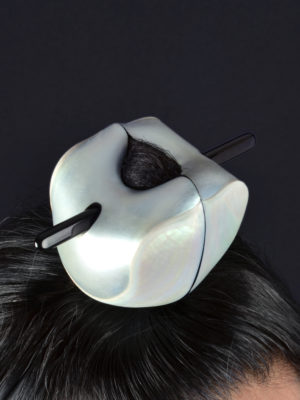
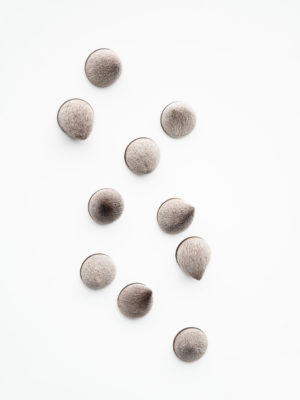
Where do you see your work in the ancient timeline of amber? Do you imagine people digging up your work in 500 years and learning from it?
I do! I don’t want it to disappear in ten years, I want it to last forever! I think about this when I cut the amber. I try to ignore inclusions when I cut it, but actually I have a large piece of amber that I don’t want to touch because there is a spider in it that has been there for 44 million years and I don’t want to destroy his habitat.
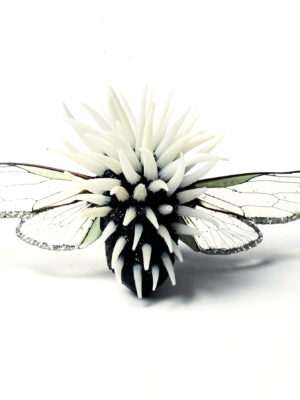
This article is published in the 2019 New York City Jewelry Week Paper, the result of a collaboration between Current Obsession and NYCJW. Fluid Movement features a selection of NYCJW events that we can’t wait to see!
